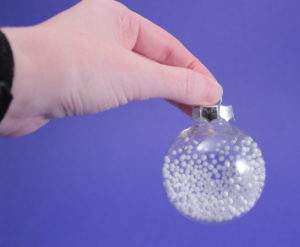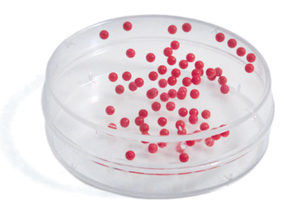 by Priscilla Robinson
by Priscilla Robinson
What can a teacher do when the season’s cold, wet, or snowy weather makes curious and rambunctious children go stir crazy? This was exactly the predicament I found myself in with my five-year-old grandson last year. After sledding and playing in the snow, Henry and I looked for something else to do. I reached deep into my Nana brain and unlocked my inner teacher. “What’s your teachable moment today, Nana?” I murmured.
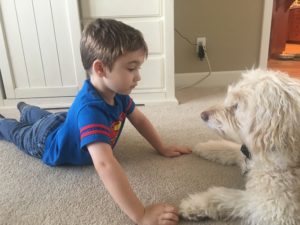 All weekend long, we had been experiencing the crackle and pop of static electricity as a result of the house’s warm, dry air. Henry himself had been zapped a half dozen times. Petting the family dog, he marveled as her hair stood on end. He was curious: what was this invisible power?
All weekend long, we had been experiencing the crackle and pop of static electricity as a result of the house’s warm, dry air. Henry himself had been zapped a half dozen times. Petting the family dog, he marveled as her hair stood on end. He was curious: what was this invisible power?
Henry and I created a “Static Snowstorm” to visualize and better understand this abstract phenomenon. We built the Static Snowstorm from some leftover plastic globe ornaments and small Styrofoam pellets—like those tiny balls you find inside a bean bag chair.
Then the science began!
Henry remembered the funny sensation of static cling when he played with the dog, so we started by rubbing our plastic globe on our Labradoodle’s fur. We got great results. The idle pellets began to bounce around and move inside the sphere. Next, he traced his finger around the plastic globe. He was intrigued that the “snowballs” could move as if they had a life of their own. He played this way for a long time, trying to manipulate the snowballs’ direction inside the globe.
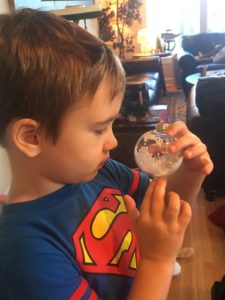 From there, we moved around the house using a variety of materials to charge up the snowstorm and really get those snowballs flying. Next, we brought the charged household items towards the globe for different results. Henry was amazed. He began to realize that there were recognizable patterns in the ways the snowballs would react to the various materials. Some materials, he realized, were just not very good at charging the snowballs.
From there, we moved around the house using a variety of materials to charge up the snowstorm and really get those snowballs flying. Next, we brought the charged household items towards the globe for different results. Henry was amazed. He began to realize that there were recognizable patterns in the ways the snowballs would react to the various materials. Some materials, he realized, were just not very good at charging the snowballs.
He made the leap and inferred that his body was something like the tiny Styrofoam snowballs picking up electric charges when petting the dog with his hand. He learned to charge and discharge the electrons by shuffling along the carpet in his stocking feet. How surprised he was when he discharged the electrons in a darkened room by touching my nose, getting a tiny snap and spark of light!
He also realized that static electricity was at work when he pulled his polar fleece jacket over his head and his hair stood on end (just like the dog’s hair). His mischievous giggles and our play with the Static Snowstorm warmed our wintry day and turned the house into a laboratory of fun and learning.
Here’s a video of our Static Snowstorm in action—in slow motion.
Static Snowstorm Lesson Idea
What you’ll need:
- clear plastic globe ornaments (easy to find at a craft store)
- white Styrofoam Pellets (or filling from a leaky bean bag chair)
- assorted household materials and objects (for instance, a wool sweater, silk scarf, carpet, wood floors, dog or cat fur, a fleece blanket, cotton dish towel, human hair, etc.)
- one sheet of computer paper (to create a funnel)
- one sheet of newspaper (to catch any falling Styrofoam pellets and facilitate clean up)
Building your Static Snowstorm:
- Lay out the newspaper on a flat work surface.
- Remove the metal stopper from the ornament.
- Gently roll the computer paper into the shape of a funnel.
- Place the narrow end of your funnel into the opening of the ornament.
- Slowly pour about 1-2 tablespoons of the pellets into the funnel.
- Gently tap the funnel until all the pellets are inside the ornament.
- Replace the ornament’s metal stopper so that it is snug.
Things to try:
- Shake the plastic ornament or rub your fingertips around it. This develops a charge on the plastic, which will attract or repel the charged Styrofoam pellets.
- Rub the plastic ornament on different materials. You’ll soon discover that some materials are better than others in developing a charge.
- Bring the charged ornament close to that material. The rubbed material has an opposite charge from the white pellets inside the ornament, so they should be attracted to each other.
- Charge a rod by rubbing it with one of the materials. Bring it close to the ornament. Observe the movement of the Styrofoam balls. Bring the rod close to the ornament’s metal stopper. Make observations.
- Most of all, have fun!
The theory behind static charge:
Objects become charged when rubbed against each other.
When two objects are rubbed together, negative electrons flow from one to the other. This results in one object becoming negatively charged and the other positively charged. The plastic ornament, the Styrofoam pellets, and some of the materials are especially good at developing and holding a charge.
Unlike charges attract.
As you rub or shake the plastic ornament, you will see the Styrofoam pellets move rapidly. They will always move toward the object or material that has an opposite charge.
Like charges repel.
The Styrofoam pellets always move away from an object or material with the same charge.
Some materials don’t exhibit a static charge due to their composition.
Some materials are not good conductors and therefore will not exhibit the expected repelling and attracting characteristics.
Teaching Tips
Capitalizing on a “teachable moment”—whether in the classroom, playground, field trip, or at home—is key to purposeful and successful learning. Utilizing prior knowledge, objects, or recent observations linked to a new concept promotes better learning, thus retention of information (Linn, 2015). This learning theory, called Knowledge Integration, uses established information in a student’s brain to anchor and build on new information. For Henry, this happened when he felt the static electricity zap his fingers and lift the dog’s hair like magic. He was ripe for learning about the science behind these experiences.
Winter is the perfect time of year to experiment with static electricity. The lack of moisture in the air from indoor heating gives electrons the opportunity to charge and discharge freely. In addition, students may be wearing garments that are susceptible to moving electrons along.
NGSS Correlations
This lesson idea will support your students’ understanding of these Next Generation Science Standards (NGSS):
2-PS1-1
4-PS3-3
4-PS3-2
4-PS3-4
MS-PS3-2
MS-PS3-4
MS-ETS1-2
HS-PS3-3
HS-PS3-5
Going Further
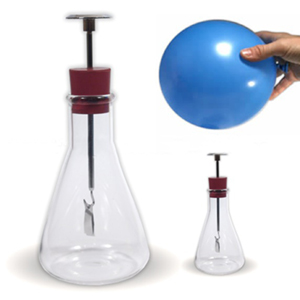 Using the Static Snowstorm is just one of the wonderful visual aids that can engage learners in hands-on opportunities to learn more about static electricity. Educational Innovations has a variety of teaching tools that will keep students curious and eager to explore further.
Using the Static Snowstorm is just one of the wonderful visual aids that can engage learners in hands-on opportunities to learn more about static electricity. Educational Innovations has a variety of teaching tools that will keep students curious and eager to explore further.
For instance, there’s the Static Electricity Electroscope…
the FunFlyStick…
the Static Tube Kit…
the Plasma Globe…
the addictive Static Spheres!
And for your convenience, Educational Innovations has created a Static Snowstorm Kit (STC-160) kit that contains everything you’ll need to create these Static Snowstorm ornaments in your class—including instructions!

